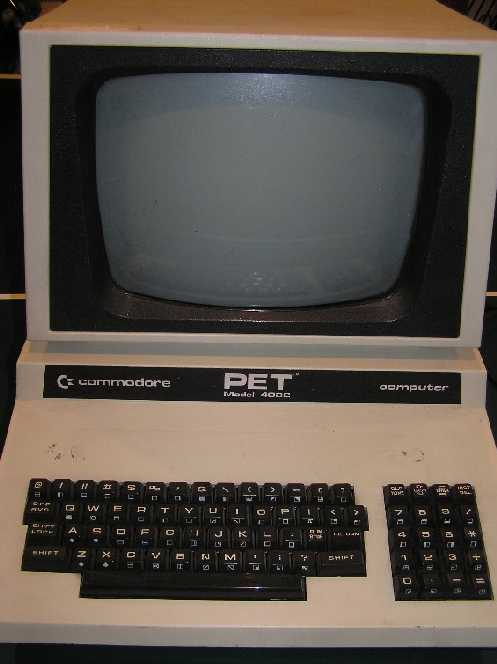





|
MANUFACTURER: |
Commodore |
|
YEAR INTRODUCED: |
1980 |
|
COST |
$1,295 |
|
PROCESSOR |
MOS 6502 |
|
SPEED |
1 MHz |
|
TRANSISTORS |
9,000 |
|
RAM |
32 KB |
|
ROM |
20 KB |
|
I/O PORTS |
IEEE 488 |
|
SSYSTEM BUS |
8-bit |
|
OS |
ROM BASIC |
|
PET 4032
|
|
PET 4032 |
|
Canada were filled with these impressive lumbering beasts. Introducing children
everywhere to the wonders of BASIC programming. Another lesson taught was the importance of patience, since many schools provided only a tape datasette for loading and saving work. Like the other models of PET, the 4000 series includes dual
datasette ports, though only one is exposed to the outside of the casing. A standard IEEE-488 interface in the back
allows the PET to connect to the numerous (and heavy) disk drives and printers being produced by Commodore and other manufacturers. The PET also has a fully programmable bi-directional parallel interface called the "User" port,
which allows the PET to connect and control almost any device one could dream up! The greatest feature, however, is the
friendly READY prompt, and the well-laid out keyboard with graphic Interestingly, although Commodore provided 8, 16,
and 32k versions of their PET 2001 and 3001 series, they had a hard time getting people
to purchase higher memory versions as an upgrade. It seemed that people were soldering in their own memory chips onto
PET |